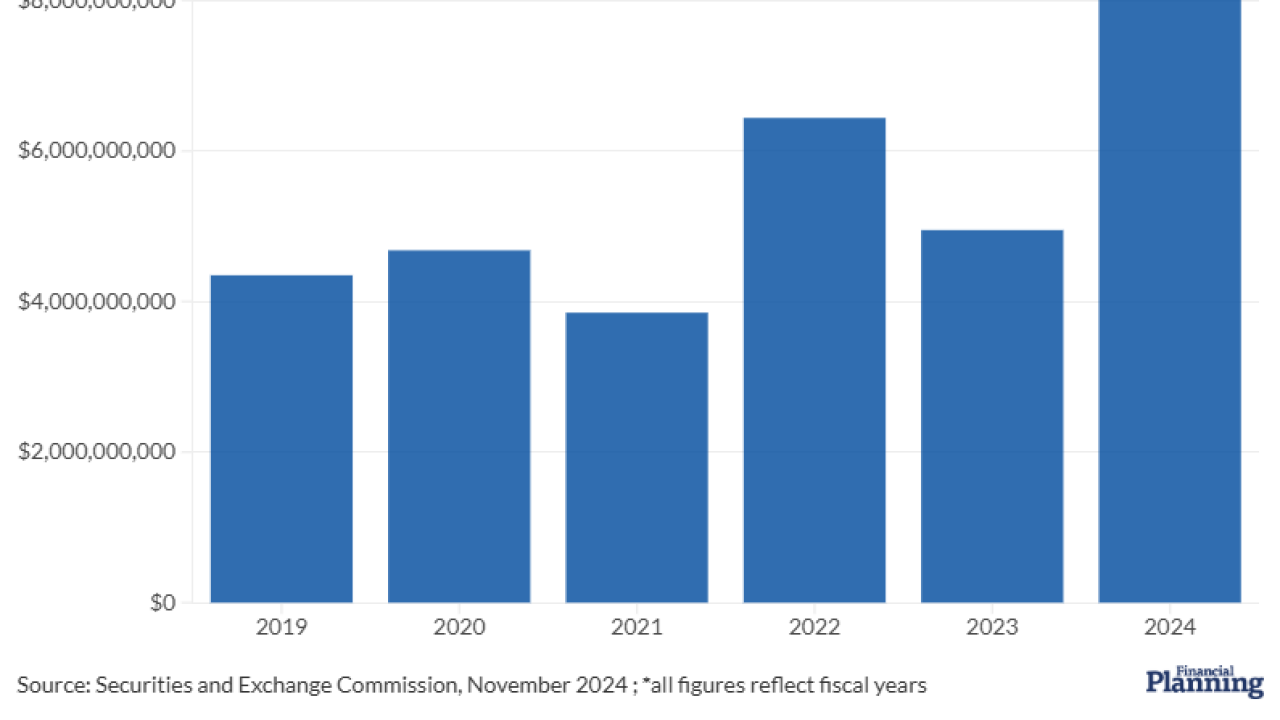Because they all aim for similar goals, the five oldest domestic equity dividend growth ETFs appear to travel as a pack. A closer look, however, shows they move at different speeds, depending on market conditions and the time frame a client is considering for investment.
As a result, advisers seeking exposure to this category for their clients, both to provide some downside protection for equity holdings and for growing income, have much to examine when choosing.
ETFs are worth examining over mutual funds not only because they are among the most popular investment products, but also because they typically have a more manageable set of portfolios. In this case, there are about 140 ETFs that feature a dividend screen, but only five hold U.S. stocks exclusively and have been around for 10 or more years. The decade-long performance record allows advisers and clients to see how the portfolio does in good markets and bad.

One fact that is instantly apparent from the performance data: Dividend growth ETFs can’t buck the overall market trend. Each of the five ETFs had its best performance in 2013, a good year for stocks, and its worst in 2008, a year that most market participants would like to forget.
Even so, they all take different approaches to dividends. Here are thumbnail sketches of the five oldest dividend growth ETFs:
iShares Select Dividend ETF (DVY) is the pioneer in this group, launching on November 3, 2003. It is based on the Dow Jones U.S. Select Dividend Index, which does not require annual growth of shareholder payments. Instead the index requires stocks to have a five-year non-negative dividend growth rate and to have paid shareholders in each of the preceding five years. The highest yielding 100 issues to qualify are in the index. This methodology allows for some new dividend payers, which usually have robust early dividend growth. That may account for DVY’s second highest Sharpe ratio in our group over the past five years of a bull market. Over 10 years, however, DVY’s Sharpe ratio was in the middle of the pack, perhaps reflecting new dividend payers’ lack of commitment during a market downturn.
PowerShares Dividend Achievers Portfolio (PFM), which came public in September 2005, is based on the Nasdaq U.S. Broad Dividend Achievers Index. This benchmark, which weights by modified market capitalization, requires at least 10 consecutive years of dividend increases. Common stocks, limited partnership units, shares of beneficial interest and shares of limited liability companies may be included. The broad sweep (273 holdings) of the portfolio may be a reason that PFM placed fourth, based on its Sharpe ratio, for both the five-year and 10-year periods.
PowerShares High Yield Equity Dividend Achievers ETF (PEY) was launched nine months before its broader sibling. Because it holds only the top 50 yielding common stocks (with sector limitations) drawn from the Broad Dividend Achievers Index, it tends to swing for the fences. As a result, it has the best five-year return and Sharpe ratio and the worst 10-year numbers for both metrics. It also did best in 2013 and worst in 2008.
SPDR S&P Dividend ETF (SDY) holds stocks from the S&P Composite 1500 that have increased dividends annually for at least 20 years. The index is weighted by yield and no position may be more than 4%. SDY, launched in November 2005, holds 105 stocks. Its focus on long-term increasers gave SDY the best 10-year total return and the smallest loss in 2008. But in the past five years, it landed in the middle.
Vanguard Dividend Appreciation ETF (VIG) is based on a modified version of the index used in PFM. Called the Nasdaq U.S. Dividend Achievers Select Index, it starts with the Broad Dividend Achievers, but limits holdings to common stocks. Other “proprietary” criteria are applied, but not disclosed. VIG closely tracked its cousin PFM over five years, but did much better over 10. The ETF, first sold in April 2006, holds 185 stocks.





